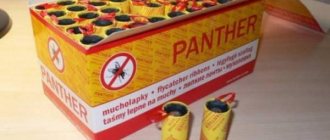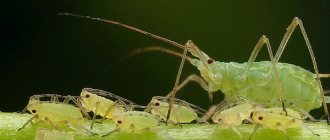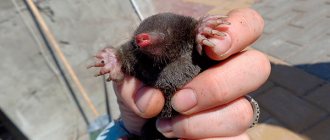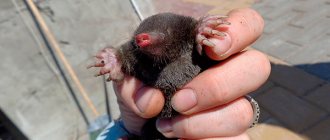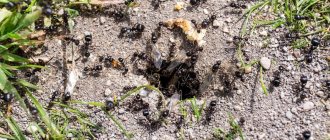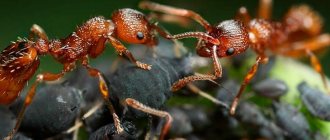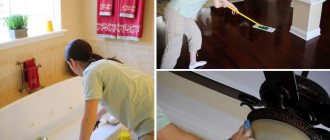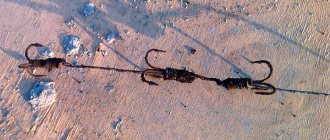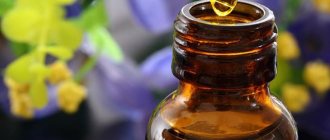16.10.2019
Despite the fact that flies have become a common everyday occurrence, there is hardly a person who is not irritated by them. They are extremely annoying even in a city apartment, not to mention a private or country house, an area where they have complete freedom. Although the buzzing synanthropes do not destroy the crops in the garden, they bring a lot of worries and problems. You need to get rid of them immediately, noticing even a couple of individuals, otherwise they can fill the whole house. Therefore, many summer residents are concerned with the question - how to destroy annoying parasites?
- Description of the pest
- How to deal with flies in the house
- Controlling flies outdoors
- How to get rid of flies in a barn
- Preventive measures
Description of the pest
Almost everyone knows what most types of flies look like. This is a small insect, about 8 mm long, with a hairy body, usually gray or black, and one pair of transparent membranous wings. The paws have sharp claws and sticky pads, which allows them to move on any surface. The organ of smell is the antennae, with the help of which they sense odors many meters around.
The eyes of these pests have a special structure. There are five of them in total: three eyes are located on the midline of the forehead and two large eyes on the sides of the head. The large eyes are made up of thousands of hexagonal facets. This arrangement of the organs of vision allows you to see everything around at 360 degrees, so it is almost impossible to catch it simply with your hands.
Fly
The mouth has a licking-sucking structure, a kind of proboscis acts as a mouth, therefore flies feed mainly on liquid food, solid food must first dissolve in saliva.
These pests multiply very quickly. A female can lay more than 6 clutches over the summer, and each clutch can contain more than 1800 eggs. Life expectancy is approximately 2-4 weeks, depending on climatic conditions, so up to 20 generations can change over the summer!
Why are flies dangerous?
Favorable conditions for living are places where garbage, dirt and various waste accumulate. They feed on the products of decomposition of organic waste. Since there are many different pathogens in the garbage, pests on their legs transfer them to the food on which they crawl.
Flies on food
Thus, food may contain pathogens of intestinal infections, tuberculosis, cholera, dysentery, helminthiasis, salmonellosis, ascariasis, and sometimes more dangerous infections - for example, anthrax. Some species may bite humans when the risk of infection increases.
In addition, flying parasites can lay eggs on bread, which, when eaten, enter the human body and cause intestinal myiasis, the consequences of which can be very dire.
Harm and benefits of green flies
The main danger of blowflies is that they spread many diseases on their bodies, including cholera, dysentery, intestinal myiasis and typhoid fever. And given their fantastic reproduction speed, flight speed and penetration into all cracks, such a danger is very likely.
Flies also spoil a huge amount of food products, causing huge losses to food industry enterprises and livestock farming (they lay eggs in the nose, eyes, genitals, wounds, and transfer various pathogens and parasites from sick animals to healthy ones).
There are also benefits from carrion. By knowing the timing of blowfly development at all stages, forensic scientists can determine the time of death to the day, even if the body has been adversely affected. Insects were first used in search of killers back in the 13th century.
During the war, 100 years ago, maggots were used for field cleaning of wounds from dead flesh. Having learned that the juice of the larvae dissolves only areas that die and does not touch the living ones, they began to use them to remove necrotic layers.
First, they filled the wounds with maggots, and after a certain time they removed the cleaners, carefully cleaned the surface of the wound and obtained clean, living and sterile flesh. For medical purposes, special larvae were used, the cleanliness and sterility of which were monitored so as not to further infect the wounded.
Even now, options for using carcasses to treat tissue necrosis are periodically being developed, since dead tissue cannot be removed surgically so thinly, nanometers in size.
How to deal with flies in the house
Mechanical methods
Fly swatter
The simplest and most harmless method of destruction. A fly swatter can help in the fight against flies in the country if there are few pests in the house, but even in this case you will have to try (after all, thanks to the structure of the eyes, flies see 360 degrees).
Adhesive tapes
Quite a budget option. Pests fly towards a scent that is attractive to them and stick tightly to the tape. It doesn’t look very aesthetically pleasing, but it allows you to catch a large number of parasites, especially if you hang several ribbons. It is worth remembering that after insects get on the tape, it is better not to throw away the tape, but to burn it.
Duct tape
Electrical traps
The principle of operation of the traps is as follows: the trap[/anchor] contains a powerful ultraviolet lamp, around which there is a metal mesh. Parasites flock to bright light, fall on a metal mesh, which shocks them, and die. Such traps destroy not only flies, but also other flying insects.
Light traps
The principle of operation of a light trap is similar to electric traps, but instead of electric current, a sticky layer is used, to which parasites stick.
Ultrasonic repellers
As the name implies, the device acts on parasites using ultrasound. It is unpleasant for insects, so they simply disappear from the range of the device.
Folk tricks
Homemade traps
How to get rid of flies in the house using improvised means? You can make your own traps. Cut the top of the plastic bottle, turn it upside down and insert it back into the bottle. At the bottom of the bottle you need to pour liquids that are attractive to insects, such as beer, syrup, water sweetened with honey or sugar. Flocking to scents that are pleasant to them, the pests end up in the bottle and can no longer get out of it.
Homemade fly trap
Using the same principle, you can make a trap from a bottle or jar and a paper funnel - roll up a funnel out of paper, insert the narrow neck into the jar towards the bottom, pour sweetened or fermented liquid into the bottom.
You can wrap the top of the jar in cling film, make a small hole in the film, and pour a mixture of vinegar and dishwashing liquid into the bottom. Having flown inside the jar, the pest will not be able to fly out of it and will drown in the liquid.
Poisonous mixtures
You can prepare special poisonous mixtures disguised as treats.
- Dilute syrup, sugar or honey in water, add black pepper. Having tasted such a treat, the insects will die in a couple of days, because... cannot tolerate black pepper.
- Dilute 1 tablespoon of soda in a quarter glass of milk, add half a teaspoon of formaldehyde. This mixture can be used to treat door jambs, corners, shelves, or simply wet a piece of bread and leave it in a visible place.
- Dilute 15 grams of saccharin in a glass of water and leave. Flies cannot tolerate sugar substitute; it is harmful to them.
Aroma oils
Essential oils can be a great help in fighting insects. Pests cannot tolerate the smells of bay leaves, citrus fruits, cloves, lavender, eucalyptus, and mint. Bay oil can be used to wipe surfaces in the house.
Planting
Various plants that emit a strong aroma that many insects cannot tolerate are beneficial.
- Basil. In addition to aroma in the house, it can be eaten. Basil is also not tolerated by other types of blood-sucking insects, such as mosquitoes. You can use it in dried form - lay out dry bunches of basil indoors.
- Lavender. The aroma of lavender also repels mosquitoes and moths. Pots with plants need to be placed around the kitchen and rooms.
- Mint. Not only mint oil works against pests, but also growing mint. A nice bonus is that it can also be eaten and made tea.
Mint
- Geranium. A very popular plant that is often grown at home. Repels flies, midges and others. It can also be planted in open ground.
- Sagebrush. A very aromatic herb, it is usually used in the house in dried form (bunches of wormwood are laid out in rooms), and can be planted in open ground.
Chemicals
Chemical agents are used when there are too many flying synanthropes and physical or folk methods do not work. The effectiveness is higher compared to traditional recipes, but the drugs can be unsafe for humans and animals, therefore, when using insecticides, you need to use personal protective equipment - gloves, a mask, a suit. During processing, it is necessary to exclude people and animals from being in the room. After treatment, the rooms must be thoroughly ventilated.
- Minap 22. Active ingredient – chlorpyrifos (9.3%). It is a concentrated white suspension. Once in the insect's body, it disrupts the functioning of the nervous system, which leads to muscle cramps and paralysis, as a result of which the parasite dies. It is effective not only against flies, but also against cockroaches, bedbugs, ticks, ants and other pests.
- Master 250. Active ingredient – chlorpyrifos (25%). It is an analogue of the highly effective drug Empire 20 (discontinued). Used against a wide range of different parasites. Spray on surfaces. The greatest insecticidal effect is achieved precisely when the insect comes into contact with the preparation on the surface. Low toxicity for people, animals and birds. The effect lasts for 6 months.
- Get. Active ingredient: chlorpyrifos (5%). A very popular product among consumers. It is a cream-colored liquid concentrate with a faint orange scent. An aqueous solution is prepared and sprayed on the surface. Adult individuals, upon contact with the surface, attach microcapsules with poison to their paws, it penetrates their body, disrupts the functioning of the nervous system, which is why the individuals die. The effect does not appear immediately, but within 14 days, and lasts up to six months.
- Dichlorvos. The active ingredient is dichlorovinyl phosphate. Broad-spectrum pesticide and insecticide. The mechanism of action is associated with a disorder of the nervous system. It is often used on the farm to combat many pests. It has a strong odor and is toxic to humans and animals in large quantities, so protective equipment must be used during processing, and the room must be ventilated after processing.
- Agita 10 WG. The active ingredients are thiamethoxam (10%) and Z-9-tricosene (0.05%). Tricozene is a sex hormone of flies that attracts them to places where the drug is applied. Thiamethoxam has intestinal and contact insecticidal effects. It is a beige powder that can be diluted with water or used dry. It begins to act within 5 minutes, and the effect lasts up to 8 weeks.
Insect killing devices
Homemade devices are good, but with their help it is not always possible to completely get rid of synanthropes. There are special devices on the market that allow you to not only repel, but also destroy flies and other insects. They have the following undeniable advantages:
- safe for humans and pets;
- have small dimensions;
- have a modern, attractive design;
- provide 100% cleaning of premises in a country house.
Devices for killing flies
The most popular devices are:
- Electric trap lamp. The device is a small shielded surface with a powerful source of ultraviolet radiation, which is covered with a metal grill. Attracted by the light, the flies touch the energized fence and die. Prices vary from 2900 to 4500 rubles depending on the manufacturer.
- Insecticidal lamps. They are connected to the electrical network and can work around the clock in the dacha premises. The devices are absolutely safe for people and pets. Many models are equipped with adhesive sheets or special trays, which ensures high hygiene of the device for killing flies. Prices are within 3000 rubles.
- Insect killer. An effective device against flies and other insects. It is easy to install and has a large affected area, which reaches 4000 m2. It is recommended to install it in a summer cottage. During operation of the device, carbon dioxide, heat and moisture are released, which attract flies. Insects that fly up are sucked into the device and die from dehydration. Prices range from 2933 to 4590 rubles depending on the manufacturer.
- Fumigators. They are very popular among consumers living in the countryside due to their ease of use, durability, high efficiency and safety for humans and warm-blooded animals. The principle of operation is simple - a special plate heats up from an electric charge and releases the toxic substance vaporrin. At the dacha, this device is indispensable, because the poison paralyzes the respiratory system of flies and other insects, which leads to their death. The price of the plates is within 50 rubles.
- Ultrasonic devices. With their help, you can quickly and safely get rid of annoying flies in your dacha. Sound waves of a certain frequency have a detrimental effect on insects. Hearing this sound, flies immediately fly away from the source that poses a danger to their lives. The device is effective only indoors. The price range is quite wide - from 636 to 1490 rubles.
Review
In the summer at the dacha we only use a fumigator. Flies, mosquitoes and other insects practically do not fly into the room. We set fire to the records on the veranda.
Olga, Perm
Controlling flies outdoors
Fighting flies in nature has its own nuances. Against buzzing creatures in the open air, you can use almost all the same means as in the house, but taking into account the specifics.
On the site you can plant plants whose smell insects cannot tolerate - mint, wormwood, geranium, basil, hazel, marigolds, bird cherry.
Electrical and light traps for outdoor use must be larger and more powerful, otherwise the effect will not be noticeable.
Fly trap
If you are planning gatherings on the veranda or just in nature, you can organize a “separate table” for pests not far from the gathering place - a trap with sweet or fermented bait. Another option is to wipe the tables and chairs on which gatherings are planned with vinegar. The smell of vinegar will repel unwanted neighbors.
How to get rid of flies in an open area? Insect killers can be used. They are usually very expensive, but in terms of effectiveness, no other product can compare with them. In addition, you are guaranteed the absence of other parasites on the site - mosquitoes, wasps and others.
Plant fly repellent plants in your yard
An excellent remedy for flies in the yard are live plants that emit a specific smell. They will repel flies with their smell. Such plants include:
- Elder;
- Lavender;
- False indigo;
- Basil;
- Mint;
- Bird cherry;
- Tansy;
- Amorphous.
These plants can be planted directly in the ground or planted in pots and placed near a seating area on the lawn.
How to get rid of flies in a barn
Attempts to exterminate parasites on farms turn into a big problem. How to deal with flies in a chicken coop, pigsty or barn? The task is complicated by the fact that there are animals and birds in the barn, which create favorable conditions for the buzzing creatures to live.
To make the fight more effective, you can use folk methods together with professional means and mechanical traps.
It should be remembered that when using chemicals, precautions must be taken. Animals and birds should not be in the premises during treatment and for 3-4 hours after it. Before releasing the animals, do not forget to clean the barn, change the bedding, remove the old and put in clean food, and wash the feeders.
Flies in the pigsty
Premises where animals live are favorite habitats for insects. There are food remains, feces, the attractive smell of sweat and the warmth from the bodies of animals, the carbon dioxide they emit. Therefore, in addition to the premises, it is also a good idea to treat the animals themselves, using both chemical (veterinary) and folk remedies. Do not forget to follow the dosage, otherwise incorrect use of the products will affect the animal.
You can keep traps and sticky tape in your shed at all times. They will significantly reduce the number of insects. Also, regular ventilation and thorough cleaning will prevent the appearance and spread of parasites.
Preventive measures
To prevent the appearance of pests, it is important to carry out preventive measures. Excellent conditions for the reproduction and residence of pests - heat, humidity, and the presence of organic waste. Therefore, the following rules must be observed:
- Keep the house, sheds and yard clean. Remove dirt in a timely manner, throw out garbage (preferably once every 1-2 days), do not leave dirty dishes with food residues, regularly ventilate the room.
- Take care of pets and birds. Remove droppings from them, clean their habitats, and wash the animal if necessary.
- Keep the area clean - cover trash containers, mow the lawn on time, remove old grass and fallen leaves, remove dog droppings, fill cesspools with bleach or any other septic tank.
- Monitor the condition of ponds on the site. Standing water creates favorable conditions for various insects, so you need to make sure that it does not rot and silt does not form.
- Properly store the harvest. The putrid smell of spoiling vegetables and fruits attracts flies, this is a real feast for them!
- Install mosquito nets. Now mosquito nets are made to any size. It is advisable to install them on windows, vents, doors, ventilation holes.
We answered in detail the question - how to deal with flies in a summer cottage. Once you start the fight, it is best to take an integrated approach - use chemicals, folk remedies, and various traps.
